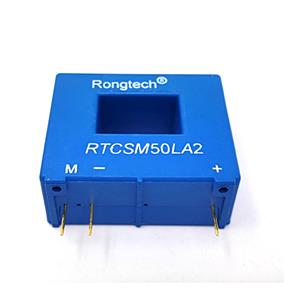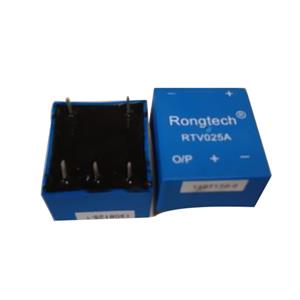Understanding Open-Loop Current Sensors: Working Principle, Advantages, and Applications Introduction
Current sensors are essential components in modern electrical systems, enabling precise measurement of current flow for monitoring, control, and protection. Among the various types, open-loop current sensors(also known as transformer-based or Hall-effect open-loop sensors) are widely used due to their simplicity, cost-effectiveness, and reliable performance. This technical post explores how open-loop current sensors work, their key advantages, and typical applications.
How Open-Loop Current Sensors Work
Open-loop current sensors operate based on magnetic induction principles, typically using a Hall-effect sensoror a current transformer (CT).
1. Hall-Effect Based Open-Loop Sensors
A Hall-effect sensordetects the magnetic fieldgenerated by the current flowing through a conductor(usually a busbar or wire).
The conductor passes through a magnetic core(often made of ferrite or silicon steel), which concentrates the magnetic flux.
The Hall sensor, placed in the air gap of the core, measures the magnetic field strength and converts it into a voltage signal proportional to the current.
Since there is no feedback loop, the output is not actively stabilized, meaning the accuracy depends on the core’s magnetic properties and the Hall sensor’s linearity.
2. Current Transformer (CT) Based Open-Loop Sensors
CT-based sensors use a transformer principle, where the primary current (measured conductor) induces a secondary currentin a winding.
The secondary current is proportional to the primary current but scaled down for measurement.
Unlike closed-loop (feedback) CTs, open-loop CTs do not have a compensating circuit, making them simpler but slightly less accurate under dynamic conditions.
Key Advantages of Open-Loop Current Sensors
✔ Cost-Effective– Fewer components than closed-loop sensors, reducing manufacturing costs.
✔ Fast Response Time– Since there’s no feedback loop, they react quickly to current changes.
✔ Simple Design– No need for compensation coils or additional control circuits.
✔ Wide Frequency Range– Suitable for both AC and DC measurements(depending on the technology used).
✔ Compact & Lightweight– Easier to integrate into space-constrained applications.
Limitations Compared to Closed-Loop Sensors
❌ Lower Accuracy– Without feedback correction, magnetic saturation and core losses can affect precision.
❌ Sensitivity to Temperature & Magnetic Interference– External factors can influence measurement stability.
❌ Limited Dynamic Range– Not ideal for very high-current or rapidly changing loads.
Typical Applications of Open-Loop Current Sensors
? Battery Management Systems (BMS)– Monitoring charging/discharging currents in electric vehicles (EVs) and energy storage.
? Industrial Automation– Current sensing in motor control, PLCs, and power monitoring.
⚡ Power Supplies & Inverters– Detecting input/output currents in UPS, solar inverters, and switching power supplies.
? Automotive Electronics– Measuring alternator current, battery health, and electric motor performance.
? Smart Meters & Energy Monitoring– Tracking household or commercial electricity consumption.
Conclusion
Open-loop current sensors are a reliable, economical solutionfor many current measurement applications where high precision is not critical. They are widely used in industrial, automotive, and power electronicsdue to their fast response, simplicity, and cost advantages. However, for applications requiring higher accuracy and stability, closed-loop current sensorsmay be a better choice.
When selecting an open-loop current sensor, consider factors like measuring range, bandwidth, isolation requirements, and environmental conditionsto ensure optimal performance.
Would you like recommendations for specific open-loop sensor models or alternatives?Let us know in the comments or contact our technical team for expert advice.




